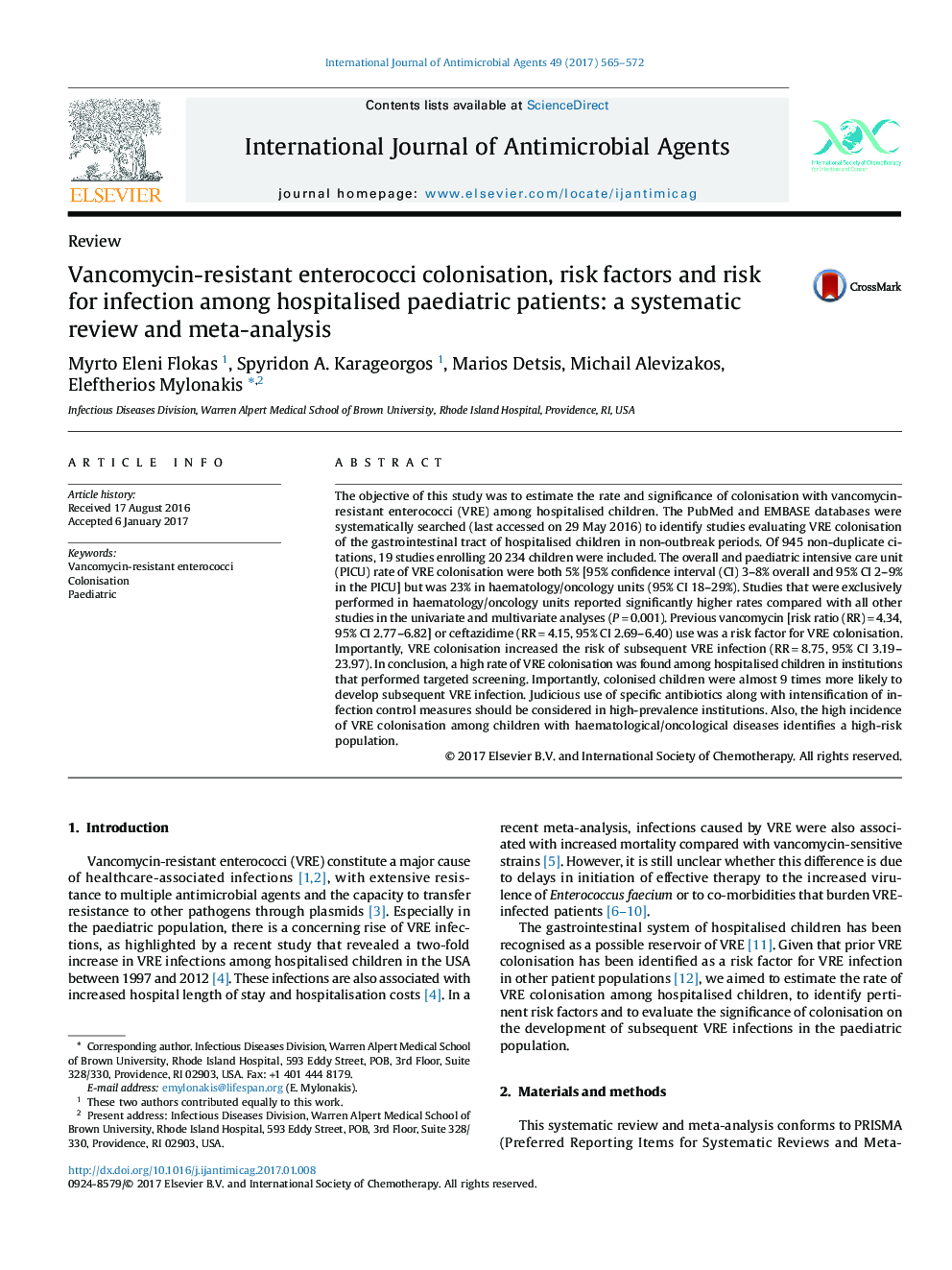| کد مقاله | کد نشریه | سال انتشار | مقاله انگلیسی | نسخه تمام متن |
|---|---|---|---|---|
| 5667026 | 1591743 | 2017 | 8 صفحه PDF | دانلود رایگان |
- Among screened hospitalised children, 5% were colonised by vancomycin-resistant enterococci (VRE).
- Significantly higher rates were found in haematology/oncology units.
- Previous vancomycin or ceftazidime use was a risk factor for VRE colonisation.
- VRE colonisation was associated with an almost 9-fold increase in VRE infection.
The objective of this study was to estimate the rate and significance of colonisation with vancomycin-resistant enterococci (VRE) among hospitalised children. The PubMed and EMBASE databases were systematically searched (last accessed on 29 May 2016) to identify studies evaluating VRE colonisation of the gastrointestinal tract of hospitalised children in non-outbreak periods. Of 945 non-duplicate citations, 19 studies enrolling 20â234 children were included. The overall and paediatric intensive care unit (PICU) rate of VRE colonisation were both 5% [95% confidence interval (CI) 3-8% overall and 95% CI 2-9% in the PICU] but was 23% in haematology/oncology units (95% CI 18-29%). Studies that were exclusively performed in haematology/oncology units reported significantly higher rates compared with all other studies in the univariate and multivariate analyses (Pâ=â0.001). Previous vancomycin [risk ratio (RR)â=â4.34, 95% CI 2.77-6.82] or ceftazidime (RRâ=â4.15, 95% CI 2.69-6.40) use was a risk factor for VRE colonisation. Importantly, VRE colonisation increased the risk of subsequent VRE infection (RRâ=â8.75, 95% CI 3.19-23.97). In conclusion, a high rate of VRE colonisation was found among hospitalised children in institutions that performed targeted screening. Importantly, colonised children were almost 9 times more likely to develop subsequent VRE infection. Judicious use of specific antibiotics along with intensification of infection control measures should be considered in high-prevalence institutions. Also, the high incidence of VRE colonisation among children with haematological/oncological diseases identifies a high-risk population.
Journal: International Journal of Antimicrobial Agents - Volume 49, Issue 5, May 2017, Pages 565-572
